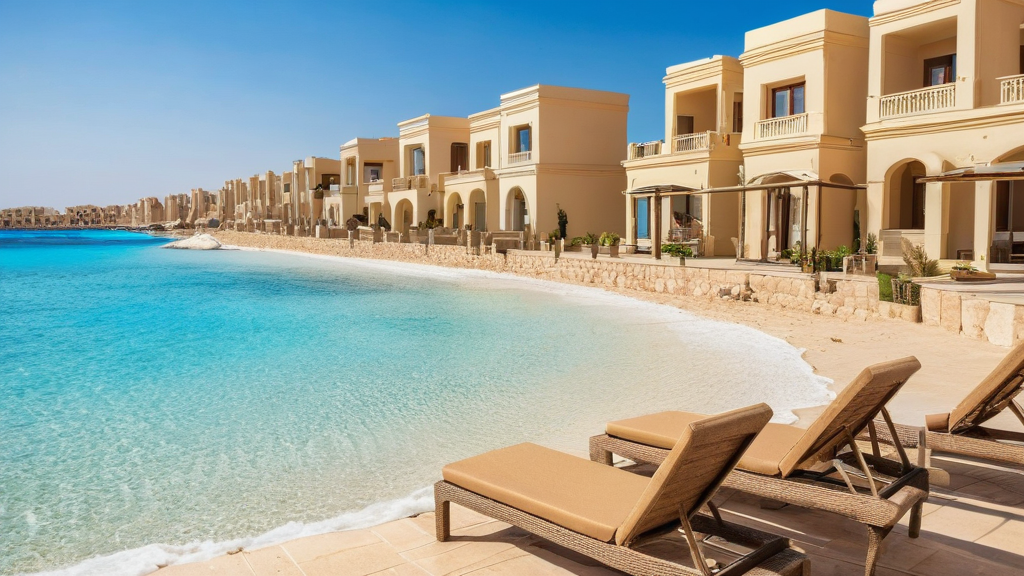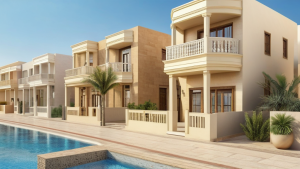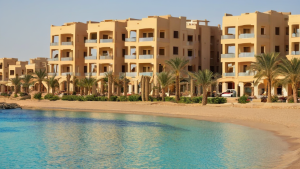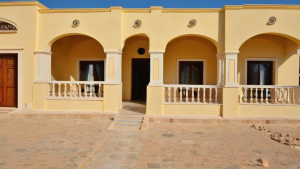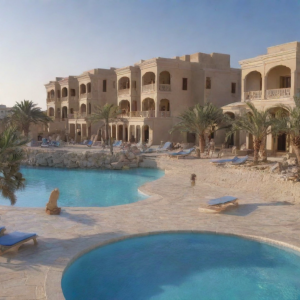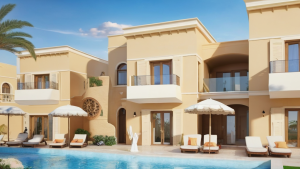Summary about owning and buying property in Hurghada, Egypt.
- For anyone interested in diving or snorkeling, the Red Sea is a premier destination worldwide.
- With climate change driving tourists to seek more exclusive and less crowded destinations, the Red Sea coast’s unspoiled nature pushes it firmly ahead in the tourism race.
- As more people look to own property near the sea, the demand for residential real estate along the Red Sea coast has surged.
- The success of the Red Sea coast as a fast-growing market is underpinned by clear strategic plans from the Egyptian government.
- Initiatives such as the Red Sea Project highlight efforts to create a luxury tourist destination with integrated resort communities, entertainment, and cultural experiences.
Exploring the factors driving the red sea coast as Egypt’s fastest-growing market
Why the red sea coast stands out in Egypt’s market landscape
The Red Sea coast has rapidly transformed into Egypt’s fastest-growing market, attracting attention from investors, tourists, and developers alike. Its unique combination of natural beauty and strategic positioning has created a fertile ground for economic growth. You’ll find stunning beaches, luxurious resorts, and vibrant local businesses all contributing to this surge. But what exactly makes this coastal stretch so appealing right now?
The unique appeal of the red sea’s natural environment
This region boasts crystal-clear waters, colorful coral reefs, and an abundance of marine life. For anyone interested in diving or snorkeling, the Red Sea is a premier destination worldwide. The pristine environment has long been a magnet for eco-tourism and adventure-seekers. With climate change driving tourists to seek more exclusive and less crowded destinations, the Red Sea coast’s unspoiled nature pushes it firmly ahead in the tourism race.
Significant investment in infrastructure
The Egyptian government has recognized the potential of the Red Sea coast and has pumped substantial funds into improving infrastructure. This effort includes better roads, expanded airports, and upgraded utilities that support both residents and visitors. These improvements make the region more accessible and livable, encouraging commercial growth and real estate development.
Key infrastructure developments include:
- Expansion of Marsa Alam and Hurghada airports to accommodate more international flights.
- Improvement of road networks linking the coast to major cities like Cairo and Luxor.
- Enhanced water and electricity services to support new housing and hotels.
Tourism: the engine driving market growth
Tourism forms the backbone of this region’s economy. With relaxation, wellness, and adventure tourism trending globally, the Red Sea coast perfectly aligns with visitor desires. From five-star resorts to charming boutique hotels, the accommodation options meet various budgets and preferences.
You can also find cultural attractions nearby that encourage longer stays, such as ancient Egyptian sites, desert safaris, and Bedouin heritage experiences. This variety enriches the destination, making it appealing for repeat visits and extended holidays.
Rising demand for real estate and residential projects
As more people look to own property near the sea, the demand for residential real estate along the Red Sea coast has surged. The market offers everything from luxury villas to affordable apartments. Investors see strong potential returns, driven by tourism-related rental incomes and the growing expatriate community seeking oceanfront living.
The government’s supportive policies for real estate development and foreign investment have further incentivized growth, turning small coastal towns into bustling lifestyle hubs.
Growing business opportunities and diversification
The economic activities around the Red Sea are not limited to tourism and real estate. New business ventures in hospitality, retail, and services sectors continue to emerge. Local entrepreneurs and foreign companies are capitalizing on the expanding market, diversifying the economy beyond its traditional base.
Moreover, the shipping industry benefits from the Red Sea’s strategic location on international trade routes, bolstering logistics and port-related businesses.
Environmental and sustainability initiatives supporting market stability
To maintain its rapid growth, the Red Sea coast is seeing increased efforts to balance development with ecological preservation. Projects focusing on sustainable tourism, renewable energy, and coral reef protection are gaining importance. These initiatives enhance the area’s long-term attractiveness by ensuring that natural assets are preserved for future generations.
By investing in sustainable practices, businesses and the government also appeal to eco-conscious travelers and investors who prioritize responsible tourism.
Convenient access and connectivity enhance market growth
The Red Sea coast’s connectivity plays a crucial role in its market expansion. Well-connected airports offer numerous direct flights from Europe, Asia, and the Middle East, making it easier for tourists and investors to reach the region. Improved public transportation and road links reduce travel time and increase convenience for daily commuters and visitors alike.
Strategic vision and government support accelerate expansion
The success of the Red Sea coast as a fast-growing market is underpinned by clear strategic plans from the Egyptian government. Initiatives such as the Red Sea Project highlight efforts to create a luxury tourist destination with integrated resort communities, entertainment, and cultural experiences.
By fostering a business-friendly environment, simplifying investment procedures, and promoting international partnerships, the government ensures continuous interest and capital flow into the region.
What this growth means for you
If you’re considering investing in Egypt or looking for a new lifestyle destination, the Red Sea coast offers numerous opportunities. Whether your interest lies in property ownership, tourism ventures, or entrepreneurship, this rapidly emerging market provides fertile ground for growth and innovation.
For travelers, the expanding amenities and attractions mean more enjoyable, convenient, and diverse experiences each time you visit. The blend of natural beauty and modern development makes the Red Sea coast a rare gem in Egypt’s economic landscape.
A combination of natural assets, improved infrastructure, government backing, and market diversification drives this coastal region’s remarkable growth. Keeping an eye on this area could be rewarding for anyone monitoring Egypt’s evolving economic opportunities.
Impact of tourism and real estate development on the red sea coast economy
The Red Sea coast stands out as Egypt’s fastest-growing market, fueled largely by the dynamic interplay of tourism and real estate development. This coastal region’s economy is undergoing a remarkable transformation owing to the surge in visitor numbers and the corresponding boost in property investments. Understanding the impact of these two sectors reveals how they jointly contribute to economic advancement, job creation, and infrastructure growth in this unique part of Egypt.
Tourism’s role in economic expansion along the red sea coast
Tourism has been a powerful driver for the Red Sea coast’s economy. The region’s natural beauty, pristine beaches, and vibrant underwater ecosystems attract millions of tourists each year. Visitors come not only for relaxation but also for diving, snorkeling, and exploring the diverse marine life, turning the coast into a hotspot for eco-tourism and luxury tourism alike.
As tourist arrivals increase, several economic benefits follow:
- Job Creation: The hospitality sector , including hotels, resorts, restaurants, and tour operators , generates numerous employment opportunities for local communities, reducing unemployment rates significantly.
- Revenue Generation: Tourists spend on accommodation, food, entertainment, and services, injecting money directly into the local economy and boosting revenues for small businesses.
- Cultural Exchange: Increased tourism fosters greater cultural interaction, helping promote Egyptian heritage, crafts, and customs, which further enriches visitors’ experiences.
- Government Income: Tourism taxes and fees become a vital source of government revenue, which can be reinvested in public services and infrastructure improvements.
Real estate development: driving long-term growth
Alongside tourism, real estate development has significantly impacted the economic landscape of the Red Sea coast. Investments in residential, commercial, and hospitality properties have expanded rapidly, responding to the rising demand for vacation homes, hotels, and shopping facilities. This creates a symbiotic relationship, where tourism boosts real estate demand, and new developments enhance tourist experiences.
Notable impacts of real estate growth include:
- Infrastructure Improvement: Development projects improve transportation networks, utilities, and communication services, supporting both residents and visitors.
- Property Market Expansion: The rise in demand leads to increased property values, attracting both domestic buyers and international investors looking for promising returns.
- Employment Opportunities: Construction, architecture, and property management sectors see job growth, benefiting a wide range of skilled and unskilled workers.
- Urbanization: Emerging towns and communities along the coast enhance local economies by providing new commercial centers, education, and healthcare facilities.
Synergy between tourism and real estate leading to economic resilience
The intersection of tourism and real estate development creates a robust foundation for economic sustainability on the Red Sea coast. Together, they attract continuous investment inflows and stimulate diverse economic activities, building a resilient market less vulnerable to external shocks.
Here’s how the synergy works:
- Boosted Demand for Services: Real estate developments often include hotels, resorts, and vacation rentals, directly supporting tourism infrastructure.
- Season-pass Tourism Growth: Year-round property ownership encourages off-season visitation, stabilizing income streams for local businesses.
- Integrated Economic Zones: Creation of tourist-residential zones promotes mixed-use developments, making the region attractive to both investors and visitors.
- Enhanced Quality of Life: Improvements in urban amenities and recreational facilities improve living standards for locals, encouraging long-term settlement.
Challenges and sustainable development considerations
Despite the clear economic benefits, growth driven by tourism and real estate also presents challenges that require careful management. Environmental concerns such as coral reef degradation, water scarcity, and habitat disruption must be addressed to maintain the area’s appeal. Furthermore, unchecked real estate expansion could strain local resources and alter community dynamics.
To ensure sustainability, stakeholders focus on:
- Eco-friendly Practices: Promoting green building technologies and sustainable tourism to protect natural resources.
- Regulatory Frameworks: Implementing zoning laws and environmental regulations that balance growth with conservation.
- Community Engagement: Involving local residents in planning processes to align development with social needs and cultural preservation.
- Investment in Infrastructure: Developing efficient waste management, water treatment, and transport facilities to support expanding populations.
In essence, the Red Sea coast’s transformation into Egypt’s fastest-growing market highlights the critical influence of tourism and real estate development on economic health. When managed thoughtfully, these sectors foster prosperity, elevate living standards, and secure the region’s future as a premier destination for both visitors and investors alike.
The Red Sea coast has firmly established itself as Egypt’s fastest-growing market, fueled by a blend of natural beauty, strategic investments, and supportive government initiatives. The region’s stunning beaches, vibrant marine life, and year-round sunny weather attract millions of tourists annually, making tourism a powerful engine for economic growth. Alongside this, rapid real estate development has transformed the coastline, offering modern resorts, residential communities, and commercial spaces that cater to both investors and visitors alike.
This growth not only boosts local employment but also stimulates related industries such as hospitality, transportation, and retail, creating a ripple effect throughout the economy. The ongoing development projects emphasize sustainability and luxury, positioning the Red Sea coast as a premier destination that balances ecological preservation with economic opportunity.
For you, whether as a tourist, investor, or local resident, the expanding Red Sea region offers exciting prospects,from enjoying world-class leisure experiences to benefiting from rising property values and new business ventures. As Egypt continues to prioritize this vibrant market, the Red Sea coast promises to remain a dynamic hub of growth and opportunity for years to come. Embracing this development responsibly will ensure that the region thrives economically while preserving its unique natural charm.

